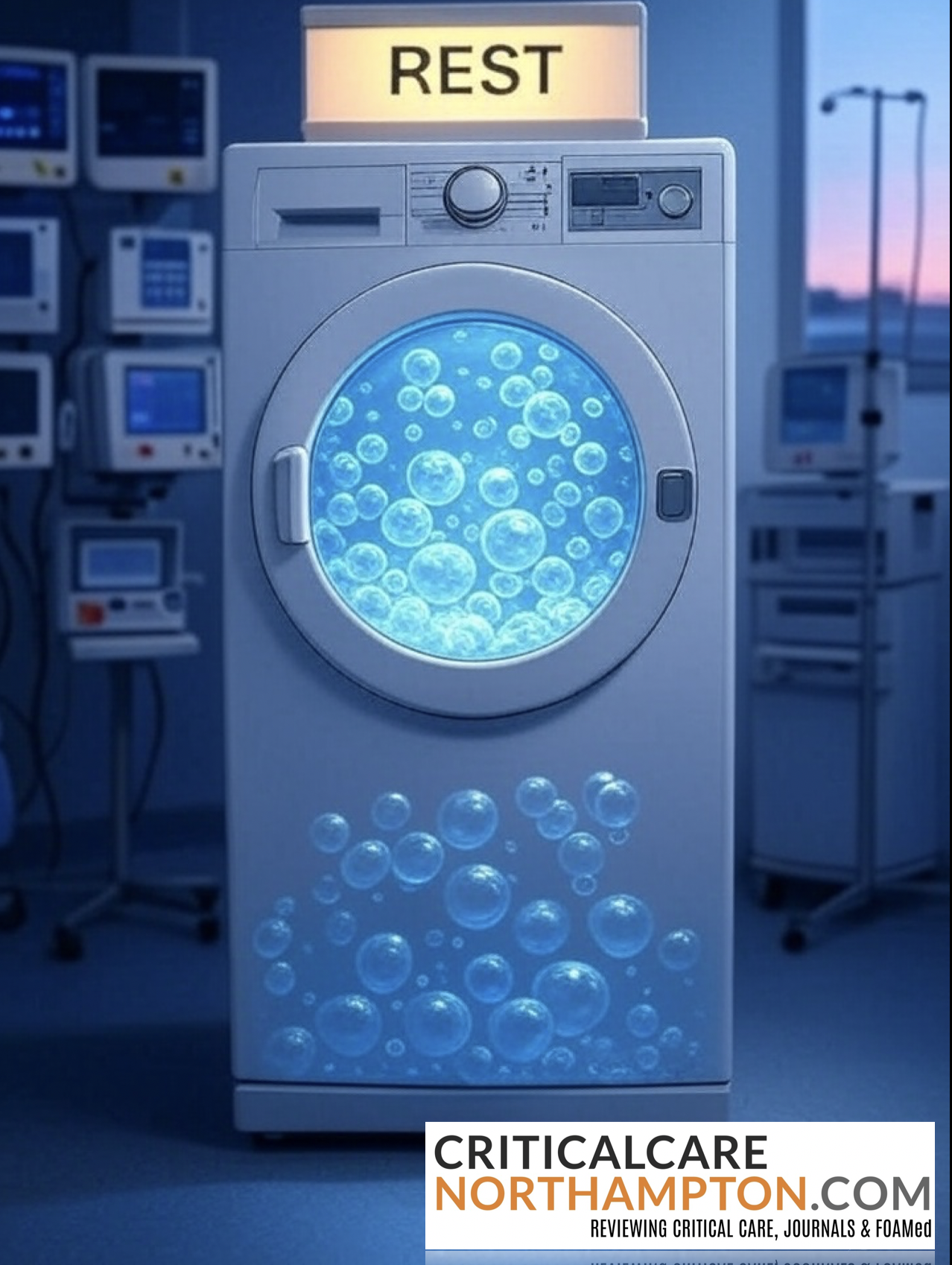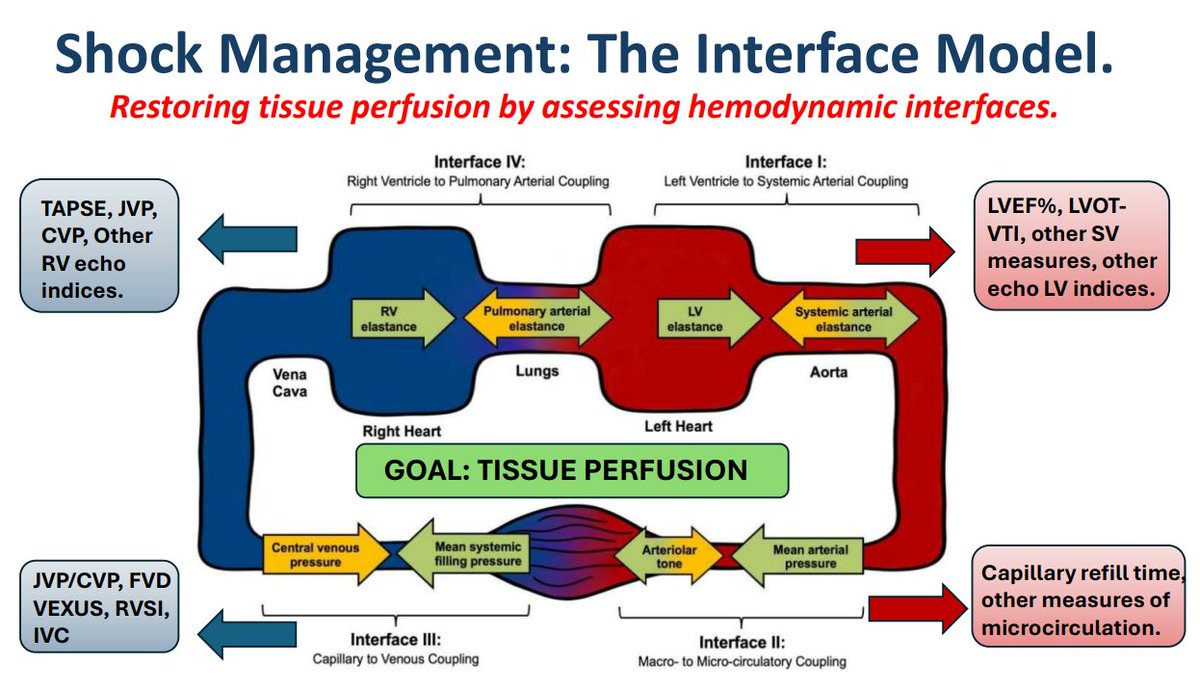What was it?
Multicenter, randomized clinical trial (REST trial) evaluating lower tidal volume ventilation (3-4 mL/kg predicted body weight) facilitated by extracorporeal carbon dioxide removal (ECCO₂R) versus standard care ventilation (6-8 mL/kg predicted body weight) in patients with acute hypoxemic respiratory failure (AHRF) in intensive care units (ICUs).
The Devil in the Details!
- 412 patients analyzed (204 ECCO₂R, 208 standard care) across 51 ICUs in the United Kingdom.
- ECCO₂R group received lower tidal volume ventilation (3-4 mL/kg) with ECCO₂R support versus standard care ventilation (6-8 mL/kg).
- Adult patients with AHRF, defined by a PaO₂/FiO₂ ratio ≤150 mmHg, mechanically ventilated for <48 hours.
- Primary outcome: All-cause mortality at 90 days post-randomization.
- Secondary outcomes: Ventilator-free days at 28 days, ICU and hospital length of stay, adverse events (e.g., bleeding, hemolysis, circuit thrombosis).
The Results!
- 90-day mortality: 41.5% in the ECCO₂R group vs. 39.5% in the standard care group (risk ratio 1.05 [95% CI 0.83, 1.32], p=0.68), showing no significant difference.
- No difference in ventilator-free days at 28 days (mean difference -0.3 days [95% CI -2.1, 1.5], p=0.75).
- ECCO₂R group had higher rates of adverse events: 21% experienced ECCO₂R-related complications (e.g., bleeding 8%, circuit thrombosis 6%).
- ECCO₂R group achieved lower tidal volumes (4.5 mL/kg vs. 6.7 mL/kg, p<0.001) and lower plateau pressures (23.5 cmH₂O vs. 25.2 cmH₂O, p=0.02).
- No significant differences in ICU or hospital length of stay.
They concluded
The authors concluded that lower tidal volume ventilation facilitated by ECCO₂R, compared to standard care ventilation, did not reduce 90-day mortality in patients with AHRF and was associated with increased adverse events.
Gripe Point Summary!
Detailed gripes below:
- ECCO₂R did not improve mortality despite achieving lower tidal volumes, questioning its clinical benefit.
- High rate of ECCO₂R-related adverse events (21%) raises safety concerns.
- Trial stopped early due to futility, potentially underpowering secondary outcomes.
- Heterogeneous AHRF population (e.g., varied etiologies like pneumonia, ARDS) may dilute treatment effect.
- Limited generalizability due to specialized ECCO₂R equipment and expertise not widely available.
- Lack of long-term outcomes beyond 90 days.
- Potential confounding from co-interventions (e.g., prone positioning, neuromuscular blockade) not fully standardized.
- Small sample size relative to AHRF prevalence, limiting statistical power for subgroup analyses.
Our Summary
In ICU patients with AHRF, lower tidal volume ventilation facilitated by ECCO₂R did not reduce 90-day mortality compared to standard care ventilation and was associated with more adverse events. While ECCO₂R achieved lower tidal volumes, the lack of survival benefit and safety concerns suggest it may not be a practical strategy for routine use. Larger trials or refined patient selection criteria are needed to clarify its role.
Who’s worked on this before?
Further gripes
- Early trial termination due to futility may have missed subtle benefits in specific subgroups (e.g., severe ARDS).
- ECCO₂R device variability (e.g., flow rates, cannula size) may have influenced outcomes.
- Adverse event monitoring focused on ECCO₂R complications but less on standard care complications, potentially biasing safety comparisons.
- Lack of data on patient-centered outcomes (e.g., quality of life, functional status).
- High cost and resource intensity of ECCO₂R not addressed, limiting feasibility in resource-constrained settings.
- Inclusion criteria (PaO₂/FiO₂ ≤150 mmHg) may include less severe cases, diluting potential benefits in critical ARDS.
- No standardized protocol for weaning ECCO₂R, potentially affecting secondary outcomes like ventilator-free days.
- Limited reporting on baseline imbalances in AHRF etiology or severity, which could confound results.
CCN’s Reflection
The REST trial provides robust evidence that ECCO₂R-facilitated lower tidal volume ventilation doesn’t improve survival in AHRF and comes with notable safety risks. Its multicenter design and rigorous methodology are strengths, but the lack of mortality benefit, high adverse event rate, and practical challenges (cost, expertise) temper enthusiasm for ECCO₂R. This study highlights the need for careful patient selection and further research to identify if specific AHRF subgroups might benefit. For now, standard care ventilation remains the safer bet—ECCO₂R’s role in the ICU is still a work in progress.

Written by JW









